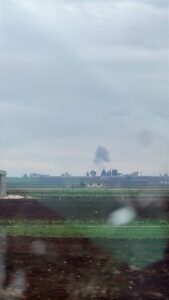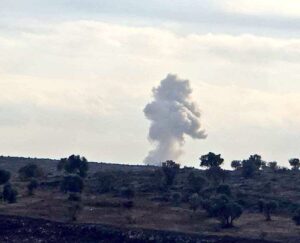The presence of 134 snow leopards has been confirmed in Bhutan by the National Snow Leopard Survey 2022-2024, supported by the Bhutan For Life project and WWF-Bhutan. This represents a 39.5% increase from the country’s first survey in 2016, when 96 individuals were counted.
Bhutan’s second national survey covered more than 9,000 km sq of snow leopard habitat across the northern alpine landscape of the country with 310 camera trap stations. It found an overall density of 1.34 snow leopards per 100 km sq, which was comparatively higher in the west than in central and eastern Bhutan. Snow leopards were also recorded in several new locations. With a vast expanse of suitable snow leopard habitat bordering India and China, the survey suggests Bhutan can serve as a source population for snow leopards in the region.
Speaking at the launch of the survey results, Karma Tshering, Secretary of the Ministry of Energy and Natural Resources, said that while the survey results confirm Bhutan as a stronghold for snow leopards, “it is also a species in peril; the IUCN Red List designates the snow leopard as Vulnerable. Without protection, this magnificent species could face extinction in the near future.”
Found in twelve countries across Asia’s high mountains, snow leopards are threatened by habitat degradation, prey depletion, conflict with humans, poaching and climate change. The global population of snow leopards is declining, but the survey suggests conservation efforts in Bhutan to restore snow leopard habitat and combat poaching are having a positive impact. The snow leopard is listed as a protected species, and it is illegal to kill or harm them.
The National Snow Leopard Survey 2022-2024 was executed with funding support from the Bhutan For Life project, and WWF-Bhutan supported the surveyors with field gear. “The estimated 134 snow leopards is a remarkable 39.5% increase since the last population survey in 2016 and should serve as continued inspiration for protection of this elusive species,” said Dechen Dorji, Senior Director, Asia Wildlife, WWF-US. “Snow Leopards survival symbolize the majesty and importance of safeguarding the Himalayas – the water towers of Asia, in the face of a rapidly changing climate. The increase in snow leopard numbers demonstrates Bhutan’s strong commitment to global conservation and illustrates what can be achieved with visionary leaders, a network of interconnected protected habitats, and meaningful participation and stewardship of local communities.”
Snow leopards play a key role as a top predator and as an indicator of the health of their mountain habitat, but the increased population may add to pressures on herding communities. Snow leopards can prey on yak calves and so the report recommends establishing livestock insurance schemes and the provision of coral fencing. These actions and other initiatives, such as community-based wildlife tourism, can facilitate the co-existence of snow leopards and communities sharing the same landscape.
“The increase in snow leopard numbers is yet another milestone achievement for Bhutan’s conservation journey. It clearly demonstrates the government’s leadership and the conservation ethos of the highland communities.” Chimi Rinzin, Country Director for WWF-Bhutan, said. “WWF is fully cognizant of the challenges of increasing conflict, and we will strive towards addressing this issue to sustain the future of snow leopards while safeguarding the livelihoods of the herder communities”.
WWF believes the survey represents an important addition to our knowledge of snow leopards, a species which is difficult to study due to its elusive nature and the challenges of conducting surveys in the mountain terrain. This survey can help to bridge the knowledge gap and aid the development of better conservation strategies across the big cat’s range.






Be First to Comment